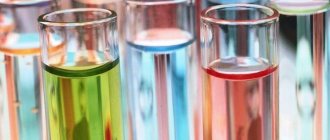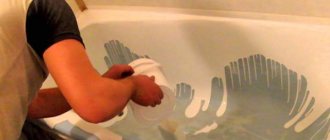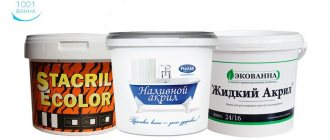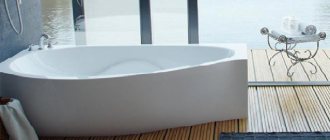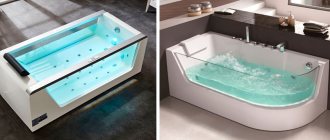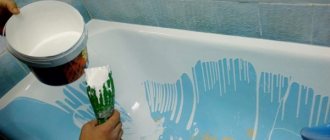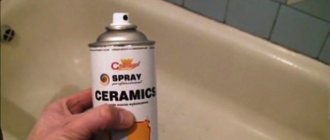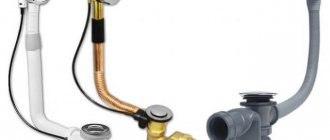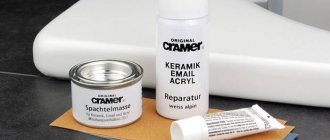What liquid is suitable for an ultrasonic bath?
The choice of cleaning liquid primarily depends on the material of your sink tank. If you have plastic, then detergents that contain additives based on kerosene, gasoline, acetone and other solvents are not suitable. In the case of just metal, alkalis and acids cannot be used either. If you have stainless steel, then you can use almost any detergent, but it also has its limitations.
At the second stage, you need to pay attention to what will be cleaned. If these are not food products, then there is no problem. If food-grade, then you should choose a detergent that can be completely washed off without residue in running water and one that does not contain substances that cause chronic diseases or cancer.
There are store-bought and home-made detergents. We will tell you in detail how to prepare your own detergent in a future article, so subscribe to our newsletters so you don’t miss out.
It is strictly forbidden to use for cleaning:
- Acid concentrates.
- Alkali concentrates.
- Flammable and explosive substances in undiluted form.
Ultrasonic bath. Liquid for ultrasonic bath
Cleaning in an ultrasonic bath
Today, cleaning surfaces using ultrasonic baths has become commonplace. Ultrasonic baths are used in almost all types of industry, but are most popular in jewelry, electronics repair, cleaning personal care items, and auto repair shops.
However, buying a cleaning device is one thing, but finding a specialized liquid for an ultrasonic bath is quite a difficult task. As a rule, in cases where it is impossible to buy a special liquid, it is made independently.
Before you go buy liquid for ultrasonic baths , you need to clearly define the scope of use. Why? Because one type of liquid is suitable for cleaning one material, but when used in another profile it will not show results.
That is why you need to carefully select the area of use when purchasing a cleaning fluid. Below are examples of how you can prepare the liquid manually. The main thing to understand is that the basis of any cleaning liquids is a simple composition. Typically this is water or alcohol. And when creating a solution, you need to choose what base you will use.
Alcohol is used in cases where it is necessary to wash the circuit boards of mobile phones or other electronic equipment. Alcohol allows you to avoid creating short circuits between parts on the board (transistors, resistors, chips, etc.).
As you know, alcohol is a dielectric. Moreover, the use of alcohol will be justified in cases where it is necessary to clean the surface of compounds that exhibit hydrophilic properties (resistant to water).
Water is used when cleaning more delicate materials such as jewelry. In addition, water itself is already a good cleaner, although it does not show such good results as when combined with a surfactant. Surfactants, or surfactants, are used in combination with water.
The simplest surfactant is a soap solution. You can use a soap solution when washing fabrics, washing injectors and car parts. In addition, you can use washing powders, car shampoos, and dishwashing detergents. In mass purification, it is recommended to purchase cheaper chemical additives for water in bulk, such as Sulfanol NP, Neonol.
In addition to water and alcohol, there are special cases of using gasoline, kerosene and other similar materials. The specialist needs to be careful when using such liquids for ultrasonic baths , as they ignite quickly.
https://www.youtube.com/watch?v=I1b19NnLoPk
How to choose detergents
Before deciding what to put in an ultrasonic bath or sink, you should refer to the procedure for choosing a product. What liquid is poured into the ultrasonic bath?
Procedure for choosing a detergent:
- We look at the material of the washing tank.
- We look at the product to be cleaned, food grade or not.
The impact of this choice is described above.
If
If you are
cleaning food
products, you should take detergents that do not contain (completely or extremely low concentration) surfactants; they are designated by the abbreviation surfactants.
Harmful surfactants include:
- APAS - anionic
- CPAS - cationic
- Nonionic surfactants - nonionic
- Amsurfactants - amphoteric
All of them are created synthetically and have unpredictable effects on human health. It is extremely difficult to wash them. They have a harmful effect not only when ingested. Upon contact with the skin, the upper layer of the epidermis is destroyed and absorbed into the blood. We will not talk about the dangers of such substances for the environment, sewerage and water supply systems. You can only protect yourself if the content of these substances is less than 5%. Therefore, when choosing a product for cleaning foodstuffs and products in an ultrasonic cleaner, pay attention to the composition (see example photo) and the obligatory mark that the product is suitable for food purposes.
If
If you are
cleaning non-food
products, you need to pay attention to the material of the product itself (its material should not react with the detergent). After that, we look at the type of contamination (carbon deposits, scale, grease, etc.) and based on these parameters, we choose what to wash and what to pour into the ultrasonic cleaner or bathtub.
Recommendations for cleaning contaminants (non-food):
- Soot and scale - fill in detergents that contain acids and alkalis.
- Soot - fill in solvent-based detergents.
- Fat films - fill in detergents with the addition of surfactants.
- Corrosion - fill in detergents with acids.
Recipes for ultrasonic bath solutions that you can make yourself
This group of solutions includes mixtures made from scrap materials. The recipes below assume that the ingredients are accessible and available to everyone.
Solutions are divided into groups according to medium:
- alkaline;
- acidic;
- based on alcohols and various solvents.
Basic solutions include:
- Recipe for a salt and vinegar solution.
- Recipe based on citric acid.
- Soda based recipe.
- Recipe for a solution based on laundry soap.
- Recipe based on solvents, gasoline, kerosene or alcohol.
Salt and vinegar solution recipe
For cooking you need regular table salt and table vinegar 9%.
Brine
.
Take 1 kg of salt per 2-3 liters of water and completely dissolve. Next, pour this mixture into the ultrasonic sink and add the products that we want to clean from carbon deposits
. Heat to 50°C and see the result.
Vinegar solution
.
Can be used either pure or diluted; excellent for removing scale
from household appliances (kettles, frying pans, etc.).
Vinegar and salt
.
You need to mix ordinary vinegar 9% and salt in a 1:1 ratio until completely dissolved. Use in required quantity. Suitable for
cleaning
stainless steel
.
Vinegar, lemon juice
.
Add 500 ml of vinegar to 1 liter of water and add 5 tablespoons of lemon juice. Suitable for cleaning glass from acid-soluble contaminants
.
Recipe based on citric acid
Like vinegar, citric acid works well to remove scale. An effective solution is 100 g of acid per 1 liter of water, heat to 50°C.
Soda based recipe
You need to take 0.5 kg of soda and 2-3 liters of water. Dissolve completely and heat to 50-60°C. Suitable for cleaning burnt marks and deposits.
Recipe for a solution based on laundry soap
For these purposes, we take 1 piece of ordinary 72% soap, grind it and dissolve it in 1 liter of water. This solution can be used to remove fats from the surface of products.
Recipe based on solvents, gasoline, kerosene or alcohols
Ammonia
. Let's talk about it separately. Dissolve 1 tablespoon of ammonia in 1.5-2 liters of water. Can be used for dishes and glass coated with non-ferrous metals. Heating to 30-40°C. Cycle 5-10 minutes.
Gasoline, acetone, solvent, kerosene, 646 (647) solvent
used in a concentration of no more than 20% of the total volume. Will help to cope with carbon deposits and oil contaminants.
General information
If relatively recently, ultrasonic cleaning was something out of science fiction, today household appliances operating on this principle can be purchased for little money in a well-known Chinese online store. However, despite the fact that the price of the device is affordable for many, you can try to assemble it yourself.
Cleaning Jewelry
I am sure that the topic of the article will be of interest not only to those readers who like to assemble something with their own hands, but also to those people who still have not decided whether they need an ultrasonic cleaning device or not.
How can you clean jewelry in an ultrasonic bath?
There are special solutions that are recommended to be used, but they are more suitable for industrial scale. In everyday life, simple distilled water or kitchen detergent is suitable. For cleaning silver in an ultrasonic cleaner
You can use a glass cleaner containing ammonia.
Using an ultrasonic bath in jewelry can save a lot of time and effort, since virtually no human intervention is required. All you have to do is add water or product, load items, set the time and that’s it – the cleaning will be completed and the device will notify you about it. As a result, the product will not only be clean, but will also regain its original shine.
Concentrated detergents Vilytek ULTRA series for ultrasonic baths
The composition of these products is specially designed for the most effective and quick cleaning of the most common contaminants, such as carbon deposits, rosin, flux, oils, fuel, blood during pre-sterilization cleaning of surgical instruments, grease, as well as household contaminants from jewelry. Taking into account the specifics of the contamination, you can choose one of four products that is most suitable for solving your problem.
Detergents are available in canisters of three volumes - 1, 3 and 30 liters and are ideal for use with standard ultrasonic baths of the VBS series. Each product is a concentrate and is diluted with water, thus achieving high economic efficiency of using Vilitek ultrasonic bath products.
Detergents for ultrasonic baths
always available in warehouse in Moscow. All prices include VAT. Delivery throughout Russia is possible.
Concentrated detergents for ultrasonic cleaners Vilitek ULTRA
| ULTRA-F — a professional product for ultrasonic baths, designed for cleaning printed circuit boards. Has a degreasing effect. Effectively removes complex contaminants, such as rosin, soldering and polishing pastes, graphite lubricants, fuel, fluxes, carbon deposits, oils, etc. The product is mainly used in the manufacture and repair of products at radio-electronic industry enterprises. Also recommended for cleaning parts of various mechanisms. Preparation of the working solution: dissolve the concentrate in water in a ratio of 5-15% of the volume of the working fluid. | ||||||||||||
| ||||||||||||
| ULTRA-M — a professional concentrated product for cleaning parts of internal combustion engines, compressors and other mechanisms from carbon deposits, oils, etc. Has a degreasing and antistatic effect. Environmentally safe, biodegradable, non-toxic. Also suitable for cleaning various metal, plastic, glass and ceramic products and surfaces. Preparation of the working solution: dissolve the concentrate in water in a ratio of 2-5% of the volume of the working fluid. | ||||||||||||
| ||||||||||||
| ULTRA-A - a unique acid-based detergent for ultrasonic baths with low foaming. Designed to remove mineral contaminants from the surfaces of products made of acid-resistant materials (stainless steel, aluminum alloys, plastics, polymers, rubber). Can be used to clean food equipment components: nozzles, injectors, needles, etc. Preparation of the working solution: dissolve the concentrate in water at the rate of 2-5% of the concentrate to the volume of water. The optimal ratio of concentrate and water is selected experimentally for a specific task. . | ||||||||||||
| ||||||||||||
| ULTRA-D — professional concentrated detergent for cleaning jewelry. Primarily intended for cleaning gold and silver jewelry. Effectively removes any household dirt, restores the product's radiance and shiny appearance, and has a degreasing effect. After processing, the product is thoroughly washed with water and dried. Recommended cleaning time for the product is up to 5 minutes. Preparation of the working solution: dissolve the concentrate in water in a ratio of 2-4% of the volume of the working fluid. The concentration may be increased after checking the durability of the product. | ||||||||||||
| Name | Availability in warehouse, pcs. | Price including VAT, RUB | Order |
| 100 | 960,00 | BuyAdd to cartDetergent for ultrasonic baths ULTRA-D (1l) | |
| 100 | 2 584,00 | BuyAdd to cartDetergent for ultrasonic baths ULTRA-D (3l) | |
| 10 | 15 600,00 | BuyAdd to cartDetergent for ultrasonic baths ULTRA-D (30l) |
The minimum account amount is 3,000.00 rubles.
What liquids should I use?
Liquids complement the action of ultrasound, and therefore are divided into areas of application:
- Alcohol-based cleaning fluids (Vega, Lyra, Zestron-FA) are suitable for workshops, cleaning circuit boards and wafers.
- Universal and profile cleaners differ in their composition (alkaline, aqueous) and contain surfactants. For example, “Metal Cleaner OM/UZ” is suitable for auto repair shops, Cleaner TM Fly No. 2 is suitable for jewelry stores, but Cleaner TM-RemScal 30 Special for silver products is used by specialists, home use is also possible, Cleaner TM-RemRad is water-based – for repair of office equipment
- Concentrated shampoos are gentle on surfaces and remove static electricity. Creolan is used for cleaning and disinfection in dentistry, medicine, optics and jewelry. Economics is a universal tool.
The concentrations of substances differ, and their packaging is 0.15 - 5 liters.
Ultrasonic sink design
The bath itself is protected by a housing made of plastic or metal, inside of which there is a steel container of various volumes for water or a special cleaning agent. There is a basket or a separate holder where all products are placed and lowered into a bowl of liquid. Next, an electronic mechanism is launched, emitting ultrasonic waves, which “knock down” all the dirt from the surfaces of objects.
There are many models on the market, ranging from small ones, like the Baku BK-3550 ultrasonic cleaner, to industrial devices, for example, the SkymenJP-008 ultrasonic bath. They allow you to set the automatic shutdown time using mechanical keys or touch buttons. Sometimes there is a heating function, which significantly improves the quality of cleaning jewelry in an ultrasonic bath
.
The main advantages of ultrasonic baths
If we compare such a system with other devices, we cannot fail to note a number of its undeniable advantages, including:
- An ultrasonic bath is a very easy-to-use product. For its operation, you only need to fill the container with the necessary solution, and the cleaning process can begin.
- Any dirt, even in the most inaccessible parts of an object, can be removed with its help without any problems.
- High performance indicators. An ideal cleaning result can be achieved by holding it inside the bathtub for just 2-3 minutes.
- After the procedure is completed, no mechanical damage will appear on the surface of the product, since it is processed without the use of any aggressive means.
Do-it-yourself ultrasonic bath: diagram. Liquid for ultrasonic bath
Greetings. In this article I will talk about how to make an ultrasonic bath with your own hands using simple schemes. In addition, you will learn about what this device is, why it is needed and how effective it is in operation.
You can make an ultrasonic bath with your own hands at home. It will come to the rescue when cleaning objects from rust, dirt and plaque. All we need for this is to take into account the production technology of the device and not deviate from the general rules and recommendations. An ultrasonic device allows you to effectively remove contaminants from a variety of parts, components and tools in the shortest possible time. Also, a huge advantage of this device is that it can clean those products for which mechanical cleaning is strictly prohibited.
Modern inexpensive ultrasonic cleaner for household use
